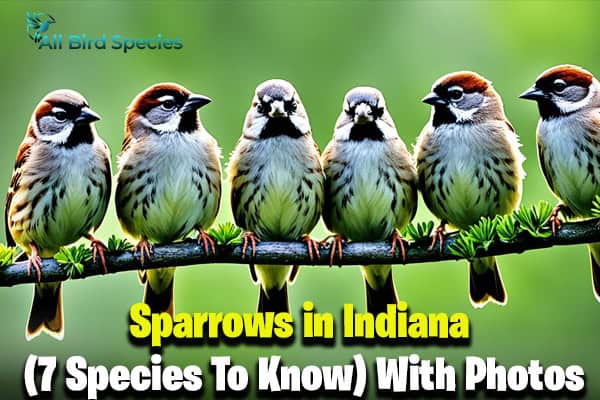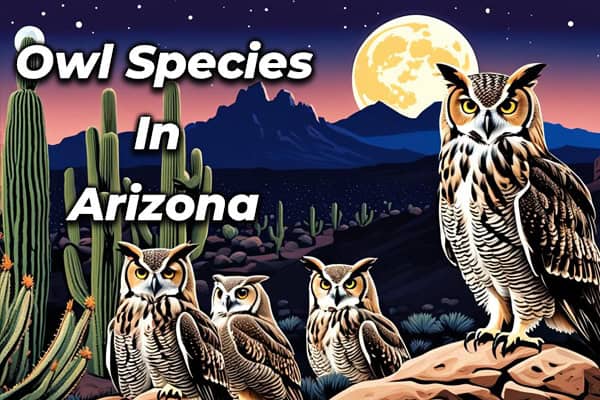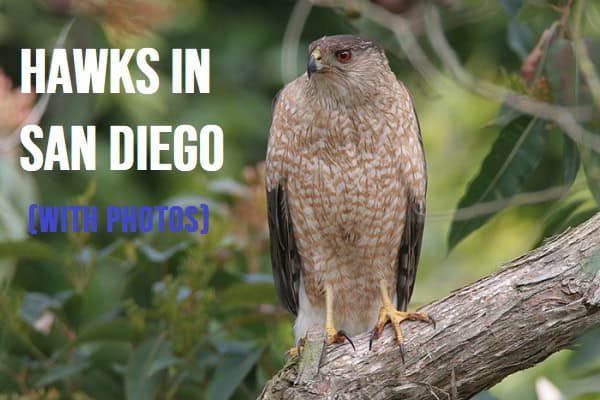Discover 8 Finches in Illinois (ID Guide With Pictures)
Are you curious about the mesmerizing world of finches in Illinois? Prepare to be amazed as we take you on a visual journey through the diverse and stunning species of finches that call this beautiful state their home.
From the vibrant American Goldfinch to the charming House Finch, each species brings its unique beauty and personality to the Illinois landscape. Get ready to explore their colors, patterns, and habitats through captivating pictures that will leave you in awe.
Whether you’re an avid bird watcher or simply have a love for nature, this article will introduce you to the fascinating world of finches in Illinois. Get ready to immerse yourself in their enchanting presence as we showcase their beauty through the lens of stunning photography.
Here are the main points:
- Illinois is home to a variety of finch species that bring vibrant colors and melodies to the state.
- The American Goldfinch is a common sight in Illinois, adding a splash of yellow to gardens and open fields.
- The House Finch is a delightful bird often found in residential areas, with a reddish-orange tint on its head and chest.
- The Purple Finch, with its rosy-red plumage, is a migratory species that graces Illinois during spring and summer.
- The White-Winged Crossbill occasionally visits Illinois with its unique crossed bill, specialized for extracting seeds.
1. American Goldfinch
The American Goldfinch, also known as the Eastern Gold finches, is a common sight in Illinois. This small finch is vibrant yellow with black wings and a distinctive peak-shaped bill. It is frequently spotted in gardens and open fields, adding a splash of color to the Illinois landscape.
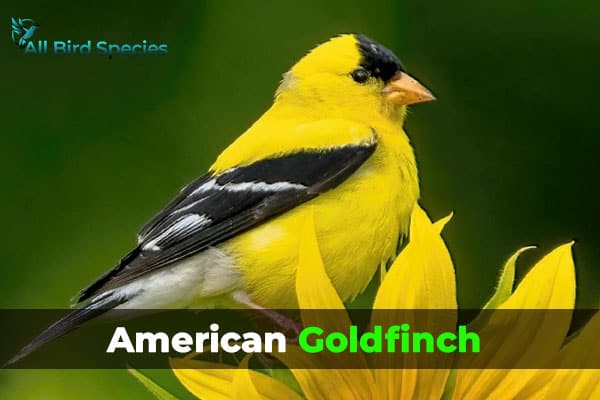
If you’re lucky, you may catch a glimpse of its captivating flight as it soars through the sky, showcasing its bright plumage. The American Goldfinch is known for its acrobatic maneuvers, effortlessly flitting from one spot to another in search of seeds and insects.
During the summer months, the American Goldfinch undergoes a molt, shedding its bright yellow feathers for a more muted olive-brown color. This unique adaptation allows them to blend in with their surroundings, providing camouflage while they nest and raise their young.
One interesting aspect of the American Goldfinch is its diet, which primarily consists of seeds from various plants. They have a particular fondness for thistle seeds, often seen perched on the head of a thistle plant, extracting the seeds with their specialized bill.
Facts about the American Goldfinch:
- The American Goldfinch is the state bird of Iowa and New Jersey.
- They are one of the last songbird species to begin nesting, typically starting in late June or early July.
- Male goldfinches perform an elaborate courtship display, flying high into the air and emitting a series of melodious calls to attract a mate.
- They are highly social birds and can often be seen in flocks, especially during the winter months.
- American Goldfinches are monogamous and form strong pair bonds that last throughout the breeding season.
“The vibrant yellow plumage of the American Goldfinch is truly a sight to behold. Its cheerful presence brightens up any day and reminds us of the beauty of nature.” – Birdwatching Enthusiast
| Common Name | Scientific Name | Appearance | Habitat |
|---|---|---|---|
| American Goldfinch | Spinus tristis | Vibrant yellow with black wings and a peak-shaped bill | Gardens, open fields, woodland edges |
2. Charming House Finches in Illinois
The House Finch is a charming little finch that can commonly be found in residential areas throughout Illinois. It is known for its vibrant colors and delightful presence. With a red or orange tint on its head, chest, and rump, the House Finch stands out among other finch species. The rest of its body is typically brown, providing a beautiful contrast to its colorful patches.

House Finches are sociable birds that often gather in small flocks. They can be found year-round in Illinois, making them a familiar sight to both birdwatchers and residents. These finches are known for their pleasant and melodic songs, which can often be heard in the early morning hours.
Feeding on a variety of seeds and fruits, House Finches have adapted well to urban environments. They can frequently be spotted at bird feeders, where they gather to enjoy seeds and grains. In addition to feeders, House Finches also seek shelter and build their nests in shrubs and trees, making suburban gardens and parks ideal habitats for them.
Interesting Facts about House Finches:
- House Finches have a wide range and can be found throughout North America.
- Male House Finches often sing intricate songs to attract mates and defend their territories.
- These finches are monogamous, with pairs often staying together for multiple breeding seasons.
- House Finches are among the most common birds observed during the Christmas Bird Count, a yearly event to monitor bird populations.
“The House Finch is a delightful addition to any garden or backyard. Its vibrant colors and cheerful songs bring joy to bird enthusiasts and nature lovers alike.” – Birdwatching Magazine
| Common Name | Scientific Name | Conservation Status |
|---|---|---|
| House Finch | Haemorhous mexicanus | Least Concern |
3. Purple Finch
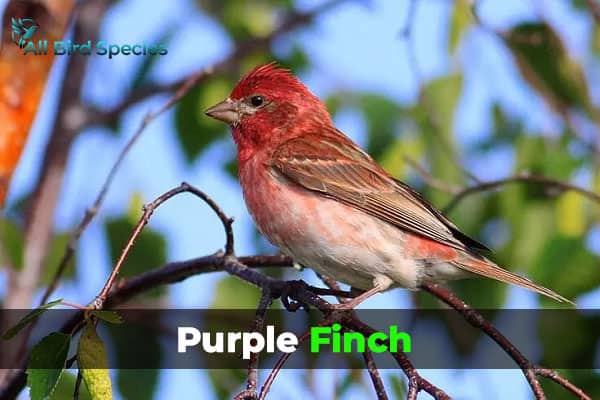
The Purple Finch is a graceful finch species that migrates to Illinois during the spring and summer months. It is known for its stunning rosy-red color on the head, chest, and back of males, while females have a mostly brown plumage with streaks.
These elusive finches can be found in woodlands and coniferous forests, adding a touch of elegance to their surroundings.
4. White-Winged Crossbill
One of the fascinating finch species that occasionally pays a visit to Illinois during irruption years is the White-Winged Crossbill. With its unique crossed bill, this adventurous bird possesses a remarkable adaptation for extracting seeds from pinecones.

Native to the coniferous forests, the White-Winged Crossbill often ventures beyond its usual range in search of abundant food sources. During these irruptions, birdwatchers and nature enthusiasts have the opportunity to spot these specialized feeders in Illinois and witness their remarkable foraging behavior.
Key features:
- The White-Winged Crossbill has a compact body with a length of around 5.5 inches.
- Adult males display a vibrant brick-red plumage, while females and juveniles exhibit a duller olive-gray coloration.
- The crossed bill of the White-Winged Crossbill is uniquely adapted for prying open conifer cones and extracting the seeds.
The occurrence of White-Winged Crossbills in Illinois can vary greatly from year to year, depending on the availability of pinecone crops in their primary breeding range. These irruptions offer a thrilling opportunity to observe these charming finches up close and marvel at their specialized feeding techniques.
| Common Name | Scientific Name | Habitat | Migration Status |
|---|---|---|---|
| White-Winged Crossbill | Loxia leucoptera | Coniferous forests | Occasional visitor during irruption years |
5. Evening Grosbeak
The Evening Grosbeak is a striking finches species with a large bill and vibrant yellow, black, and white plumage. While rare in Illinois, these eye-catching finches occasionally make appearances during winter. Look for them in large flocks near bird feeders and fruiting trees.
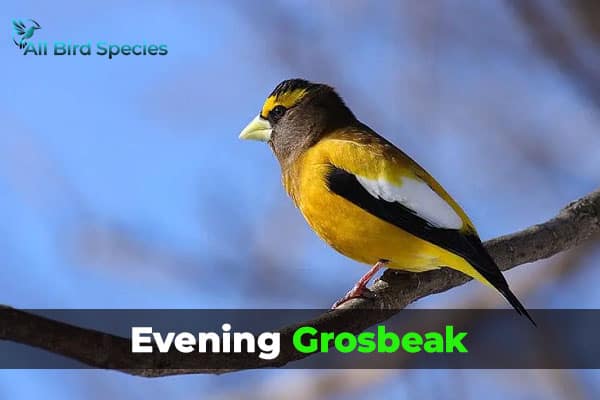
Characteristics of the Evening Grosbeak:
- Size: Approximately 7-8 inches (18-20 cm) in length
- Color: Males have bright yellow plumage with black wings and a black crown, while females have a grayish-yellow body with black wings and a yellow crown
- Bill: Large and conical, ideal for cracking open seeds and fruits
- Diet: Primarily feeds on seeds, berries, and insects
- Habitat: Coniferous and mixed forests
- Behavior: Often seen in large, noisy flocks, especially during winter
“The Evening Grosbeak’s vibrant colors and distinctive bill make it a truly eye-catching sight in the birdwatching community.” – Birdwatching Magazine
Spotting Tips:
If you’re hoping to catch a glimpse of the Evening Grosbeak in Illinois, here are some tips to increase your chances:
- Visit areas with large coniferous forests, such as Shawnee National Forest or Starved Rock State Park
- Set up a bird feeder stocked with sunflower seeds and other high-energy foods
- Look out for large flocks of finches near fruiting trees, such as apple or cherry trees
| Species | Appearance | Size |
|---|---|---|
| Male Evening Grosbeak | Yellow body with black wings and a distinctive black crown | 7-8 inches (18-20 cm) |
| Female Evening Grosbeak | Grayish-yellow body with black wings and a yellow crown | 7-8 inches (18-20 cm) |
6. Pine Siskin
The Pine Siskin is a small finch species that can be found in Illinois throughout the year. With its streaked brown body and splashes of yellow on its wings and tail, the Pine Siskin adds a touch of color to the state’s natural landscapes.
These adaptable birds have a diverse diet, feasting on a variety of seeds from trees such as pine, spruce, and birch. They can also be seen foraging on thistle and sunflower seeds at backyard feeders, often mingling with other finch species.

The Pine Siskin is known for its acrobatic flight patterns, swiftly maneuvering through woodlands and open areas. They have a delightful twittering call that can often be heard in flocks as they move from tree to tree.
If you’re an avid bird-watcher in Illinois, keep an eye out for the Pine Siskin’s distinctive markings and energetic behavior. Whether you spot them in open woodlands or at your own backyard feeder, these adaptable finches are sure to captivate your attention.
| Species | Size | Coloration | Preferred Habitat |
|---|---|---|---|
| Pine Siskin | Small | Streaked brown body with yellow patches on wings and tail | Open woodlands and backyard feeders |
7. Hardy Common Redpoll
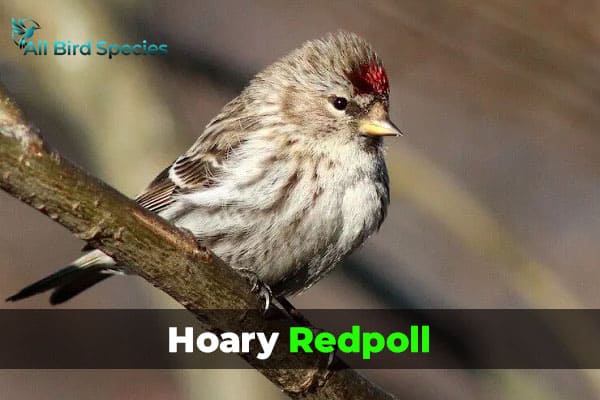
When it comes to hardy finch species that occasionally visit Illinois during irruption years, the Common Redpoll and Red Crossbill are two notable ones. These winter visitors bring excitement to the state’s coniferous forests.
The Common Redpoll boasts a streaked brown body with a distinctive red cap. Its presence adds a touch of color to the winter landscape. Keep a lookout for these resilient birds as they forage for seeds amidst the snowy scenery.
8. Red Crossbill
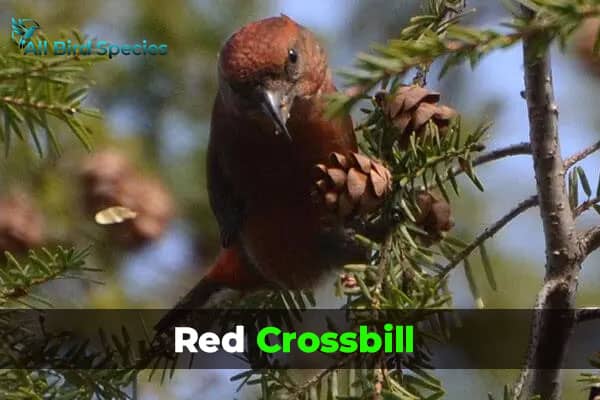
On the other hand, the Red Crossbill stands out with its unique crossed bill, perfectly adapted for extracting seeds from cones. These resourceful finches are true specialists, making efficient use of their bill to survive in their coniferous habitat. Listen for their distinct calls as you explore the forest.
If you’re lucky enough to spot a Common Redpoll or Red Crossbill during one of their visits to Illinois, take a moment to appreciate their adaptability and endurance. These finches serve as a reminder of the remarkable diversity of bird species that grace the state’s beautiful landscapes.
Check Our Previous Article
| Finches in Illinois |
| Owls in Ohio (Common and Rare Species) |
| Red Birds in Michigan |
| 150+ Cool Bird Names for Your Feathery Friend in 2024 |
Frequently Asked Questions About Finches in Illinois
Q1: Do finches stay in Illinois for the winter?
Yes, some finch species do stay in Illinois during the winter months.
Q2: Are there canaries in Illinois?
Canaries are not native to Illinois, but they can be found in captivity as pets.
Q3: Where are finches most commonly found?
Finches are most commonly found in forests, woodlands, gardens, and urban areas across North America.
Q4: What kind of bird is a finch?
A finch is a small passerine bird belonging to the family Fringillidae.


